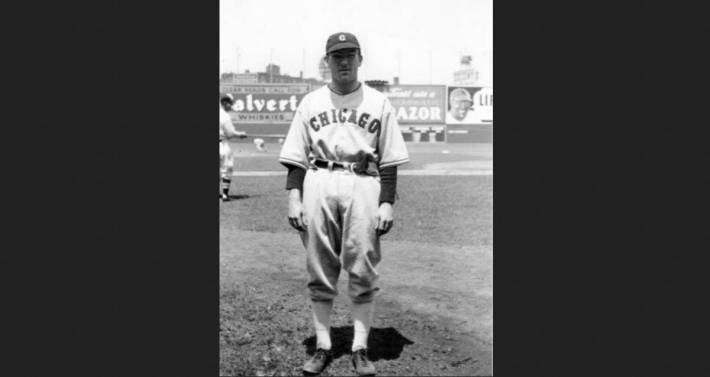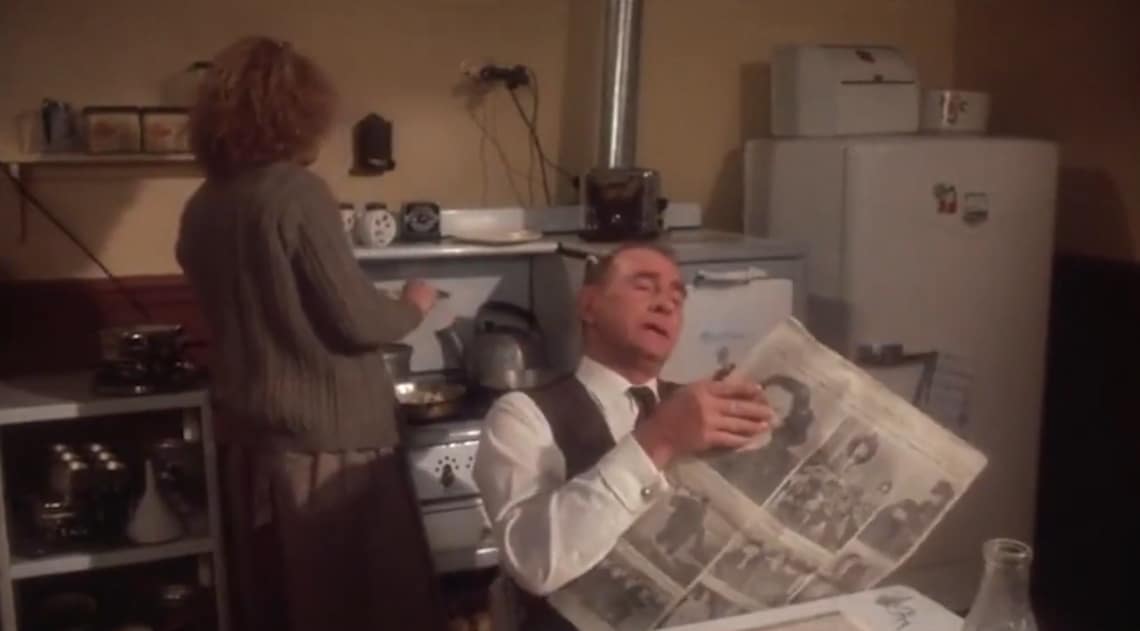Starting at 7 p.m. CT tonight, TBS will air "A Christmas Story" for 12 consecutive showings. Combine it with TNT starting its rotation of the 1983 classic on the even hours. and you'll get 24 chances to watch the movie over the course of Christmas Eve and Christmas Day.
This isn't an advertisement for the marathon, because the Turner networks don't really need the guerilla marketing. It's more that if you catch the movie at the very beginning, you'll see The Old Man grousing about an offseason deal made by the White Sox at some point in the 1940 offseason.
- The Old Man: They traded Bullfrog, I don't believe it.
- Mother: What's that?
- The Old Man: Well for chrissakes, the Sox traded Bullfrog, the only player they've got, for Shottenhoffer. "Four Eyes" Shottenhoffer, a utility infielder. Got a whole goddamned team of utility infielders.
- Mother: That's nice.
Of course The Old Man is following the White Sox and not liking what he's seeing. The movie, which takes place in Northwest Indiana, was based on the novel "In God We Trust, All Others Pay Cash" by Jean Shepherd, the renowned humorist and equally famous White Sox fan. Here is Shepherd narrating a White Sox history video in the 1980s.
And here he is telling his own personal history as a White Sox fan.
Given Shepherd's South Side credentials, the brief reference to the White Sox rings true to the material.
* * * * * * * * *
As for the specifics? Well, the movie's writers take some creative liberties with the White Sox of those days. If it weren't for Ol' Sporcle Ted's Saturday quizzes, most of the players of this era would be forgotten. Lest we perpetuate historical inaccuracies, let's play Snopes.com for this scene, because this matter is as serious as the grave.
Let's start with the transaction itself.
CLAIM |
| The White Sox acquired "Four Eyes" Shottenhoffer for "Bullfrog" in the 1940-41 offseason. |
RATING |
 False. |
The White Sox had a Bullfrog in the form of pitcher Bill Dietrich, but he was not traded in the 1940-41 offseason. He played for the White Sox from 1936 until they released him in September of 1946. He was never traded, and certainly not for a "Four Eyes" Shottenhoffer, a player who never existed.
CLAIM |
| "Bullfrog" was the only player the White Sox of those years had. |
RATING |
 False. |
Dietrich gained a form of immortality when he threw a no-hitter against the St. Louis Browns in 1937, but the rest of his career was of a pedestrian sort. He went 80-91 with a 4.23 ERA over his 11 years with the White Sox, with 230 more walks than strikeouts. Hall of Fame shortstop Luke Appling was on every White Sox team as Dietrich save 1944, when Appling missed the entire year due to military service. Fellow Cooperstown inductee Ted Lyons played with Dietrich through the 1942 season, while Thornton Lee was the staff ace, peaking in 1941 by going 22-11 with a league-leading 2.37 ERA.

But it's interesting that Bullfrog was held in such high esteem by The Old Man, because Shepherd famously framed Dietrich's career in a most unfavorable light. Like many Sox fans, Shepherd took pride in his ability to roll with the mediocrity the team presented over the years, and Dietrich embodied it in a number of ways. He wasn't even close to the worst White Sox rostered over that time, but he might've been the least impressive player to be rostered as long as he was.
Throw in a colorful, unflattering nickname, and Dietrich was a sitting target for Shepherd's barbs. He unleashed one after another in a monologue titled "Balls."
They had this pitcher named Bill Dietrich. Wild Bill Dietrich. He was kind of fat. He was a typical White Sox pitcher, and he was nearsighted, and any guy who was nearsighted who was in the big leagues was great, as far as I was concerned. Always in the spring, you'd see pictures of him in the Chicago Trib that would say, "Dietrich Signs Pact." And it always looked as if there was a thumbprint on his left lens. And he had this kind of funny squint, y'know, that nearsighted guys get.
You know one year, Bill Dietrich lost 15 games and won seven. And the next season he held out, because he had a good year. Well, it was a good year. The year before that he'd lost 19!
Old Bill Dietrich is out there pitching one day, and you can look this up in the record books. Bill Dietrich pitched a no-hit, no-run game against the St. Louis Browns. Thirty-seven games out of first place. The White Sox were 41 games out of first place! They were just two games ahead of the fourth-place team in the American Association. The White Sox and the Browns. Sister teams of defeat. For over seven years, simultaneously they occupied the cellar in the American League. It was a kind of a ballet of disaster.
And Bill Dietrich pitched a no-hit game. There were 243 paid admissions. 186 patrol boys, and three troops of Girl Scouts, who saw Bill Dietrich at the very, very apex of his world. And probably right this very minute now, poor old Bill Dietrich is polishing somebody's window at some smiling service station, looking in with that same squint.
But he was there once! He was there and he did it!
I remember one time Bill Dietrich is standing out there on the mound. He had this beautiful motion, you know. He looked kind of like a caveman, and he would walk in circles out there, and look down and peer into the darkness. And he had this catcher named Mike Tresh, who went once for over two years without getting a hit. A real White Sox ballplayer. And he used to laugh it up all the time: "ALL RIGHT. C'MON, LET'S GO. WE GOTTA GO OUT HERE. LET'S GO BILL, LET'S GO. PUT IT RIGHT HERE, OLD MAN."
And here's Bill Dietrich out there pitching. He's behind 7-1. Mike Tresh is talking it up. He's squinting down there, looking down into the darkness. Old Bill shakes off a sign, glances back towards second base where the runner has taken a short lead. He shakes off another sign. And everybody in the park knew that Dietrich had only two pitches: his slow curve and his wild one.
He's already shaken off three signs. It was just the White Sox trying to play it out, you know? Trying to make it look better! Trying to make it look better for all of us! They represented not Chicago but the South Side! You know what it feels like to be a South Sider in a world of North Siders?
Dietrich wasn't that bad. He was just an enduring form of below-average, the way current White Sox fans will remember post-surgery John Danks with far more clarity than Charlie Leesman. Shepherd had similar colorful complaints about Zeke Bonura's defense, even though Bonura was accomplished enough to show up on every other White Sox history graphic on NBC Sports Chicago.
* * * * * * * * *
For the record, Shepherd also apparently had fond memories of Dietrich, even if they weren't recorded, or voiced to completion. In an article titled "Jean Shepherd: The Survivor of Hammond" from The Great Lakes Review in 1978, Peter A. Scholl relays Shepherd's digression about Dietrich to an Indiana audience.
"One sustained, digressive sub-plot, a baseball story featuring a Depression-era Chicago White Sox pitcher named "Bullfrog" Bill Dietrich, was never finished. Shepherd spent at least fifteen minute, intermittently, advancing the story of the famous "portside hurler" in his legendary stand against the Cleveland Indians. But he left the bases loaded at the crucial moment and never finished the tale. Autograph seekers after the show were panting to know the resolution, but Shepherd admitted that it had none."
The game was probably this one in 1944, in which Dietrich beat Cleveland 3-2 by throwing 10 innings and scoring the go-ahead run in extra innings. The Chicago Tribune story referred to Dietrich as "the Philadelphia ice cream soda fancier," which isn't any better than "Bullfrog." Current and burgeoning media members apparently had no issues hitting a man with glasses.
Dietrich's career had highs and lows, and I suppose his legacy via Shepherd's anecdotes follows a similar undulation. On one hand, a mostly forgettable pitcher is on the receiving end of a two-minute roast from one of the Midwest's great monologists. On the other, we're talking about him because said Midwest monologist's material inspired his appearance in a movie played dozens of times each Christmas season.
Sure, he's involved in a fictional trade. And sure, the characterization suggests that the writers of the movie enjoyed the idea of "Bullfrog" as a very 1940s baseball name alongside an imagined moniker like "Four Eyes" Shottenhoffer. Yet he probably wouldn't have surfaced at all if Dietrich hadn't forged an impression in Shepherd's memory the hard way. For that, he deserves a little credit, and maybe on the excessive side to offset some of the lower blows. How many people are going to fact-check such a fictional headline, anyway?
Speaking of which, there's one more item that we should address before letting the matter rest.
CLAIM |
| The White Sox got a whole goddamn team of utility infielders. |
RATING |
 True. |
Sure, the 1941 White Sox had Appling, Lyons and Lee, but that didn't stop them from finishing last in batting average, OBP, slugging and homers. The Old Man had them pegged.






